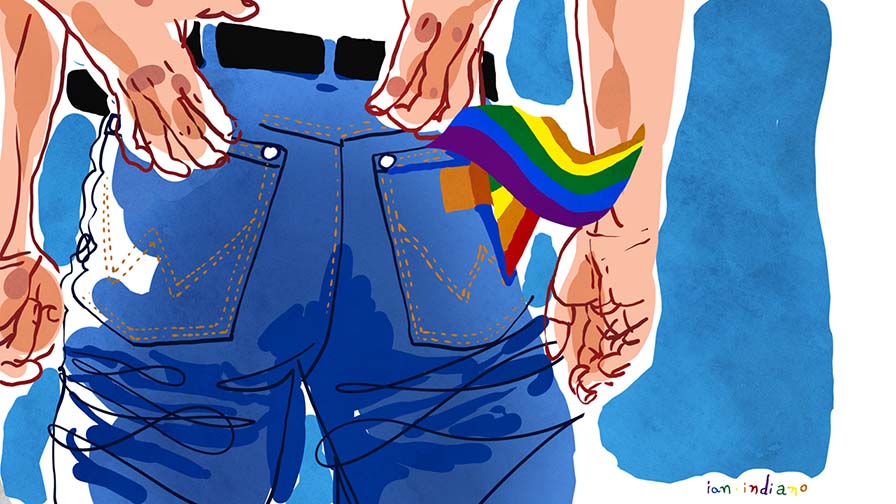Queer coding in fashion: Less a style, more a philosophy
 CREDIT: IAN INDIANO
CREDIT: IAN INDIANO"There was a long time where fashion was this secret code for queer people."
Queer coding has been an impactful way for members of the LGBTQ2S+ community to find each other through little hints. An impactful way for one to safely identify as queer, a need-to-know coded language through fashion has expanded throughout the years.
Dr. Claire Senior is a professor of Language and Liberal Studies at Fanshawe College. In her variety of teachings, one particular course is an emphasis on LGBTQ2S+ issues and history with secrecy.
Senior commented the simplicity of queer coding can be summed up by saying, “hey, I like your jeans…. wink wink,” with cuffed jeans being a notable trend in today’s queer fashion aesthetic.
“The queer community had to operate with so much secrecy for many, many years,” said Senior. “There was a long time where fashion was this secret code for queer people. Using covert ways to signal that you belonged to the community. Gay men used to carry handkerchiefs in their back pocket to help indicate their sexual preferences.”
Additionally with queer coding, Senior touched on the conversation of ‘queer baiting’ with fashion presentation.
“You’ve seen celebrities in the last couple of years, who are kind of seizing upon what they see as this trend. Someone like Harry Styles, who is hailed as this queer icon for wearing these gender non-conforming outfits, critics wonder, is this guy queer baiting or is he actually a part of the queer community? And he is very coy about that. Isn’t he just a straight dude who attracts queer people as fans by not actually being queer himself?” Senior added that queer baiting is insidious.
An additional issue involving queer aesthetic, is how straight people perceive queer people. Queer coding in fashion originated through seeing how hinted queer characters were presented in cinema without being allowed to be labelled as queer.
“A subtextual character is represented in the media but is not clearly identified by means of their sexuality,” said Senior. “They are not explicitly described as queer, but there are clues within the work that they could be identified as such. For a long time because of the various restrictions, particularly in film with the Hays Production Code, there was no homosexuality. Screenwriters then had to work really hard to hide things, and it manifested itself into an exaggeration of certain traits that straight people thought queer people possessed, and that wasn’t good.”
Characters such as ‘the sissy,’ who acted as an effeminate, exaggerated version of a gay man, without directly identifying as gay, were reoccurring.
The manifestation of over exaggerated presentations of queer people can be linked to the outflow of rainbows and pride merchandise that Senior regards as ‘tacky’ during Pride Month.
“I’ve never worn a rainbow in my life. It’s really in the past decade they started to appear with pride month. There’s something really non-threatening with rainbows, and I think that’s really what’s behind it. I don’t know too many gay people who wear them. The stuff Target was doing was insane. It was so over-the-top and garish and tacky.”
Target has been one of the many stores criticized online for a hyper-fixated look at queer presentation involving rainbows, unicorns, and glitter.
“What it does, is it dehumanizes gay people to the point where I think all of the straight people can go, ‘oh, there is nothing to fear here.’ The commercialization is getting very cynical.”
In searching for a firm definition of queer aesthetic, Senior calls the meaning nebulous and hard to define. Queer coding can be signaled through minimalistic or grand efforts in presenting one’s self to the world.
“It’s not really a style, per se, because I don’t think that there is a uniform way of presenting oneself. It’s more of a philosophy of how you present oneself. There are some people who dress flamboyantly, and everything they wear is chosen with a great deal of, ‘that’s right, look at me, I’m out, I’m proud.’”

















